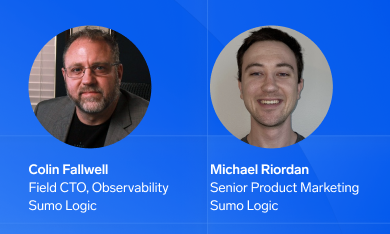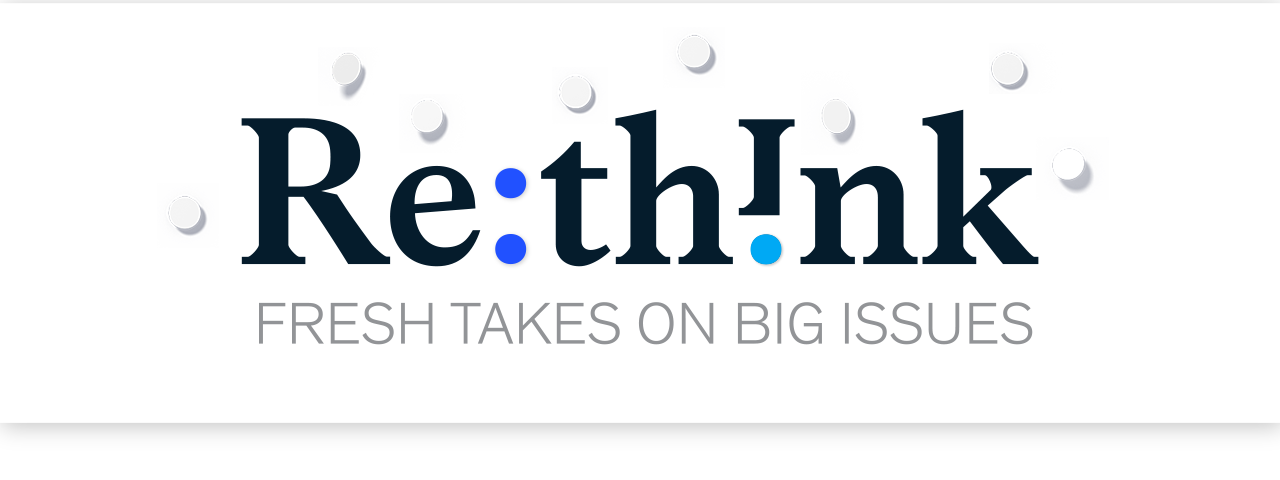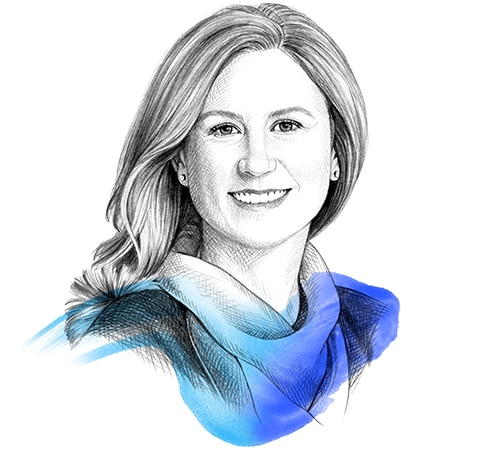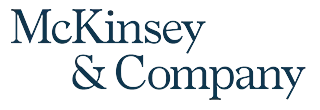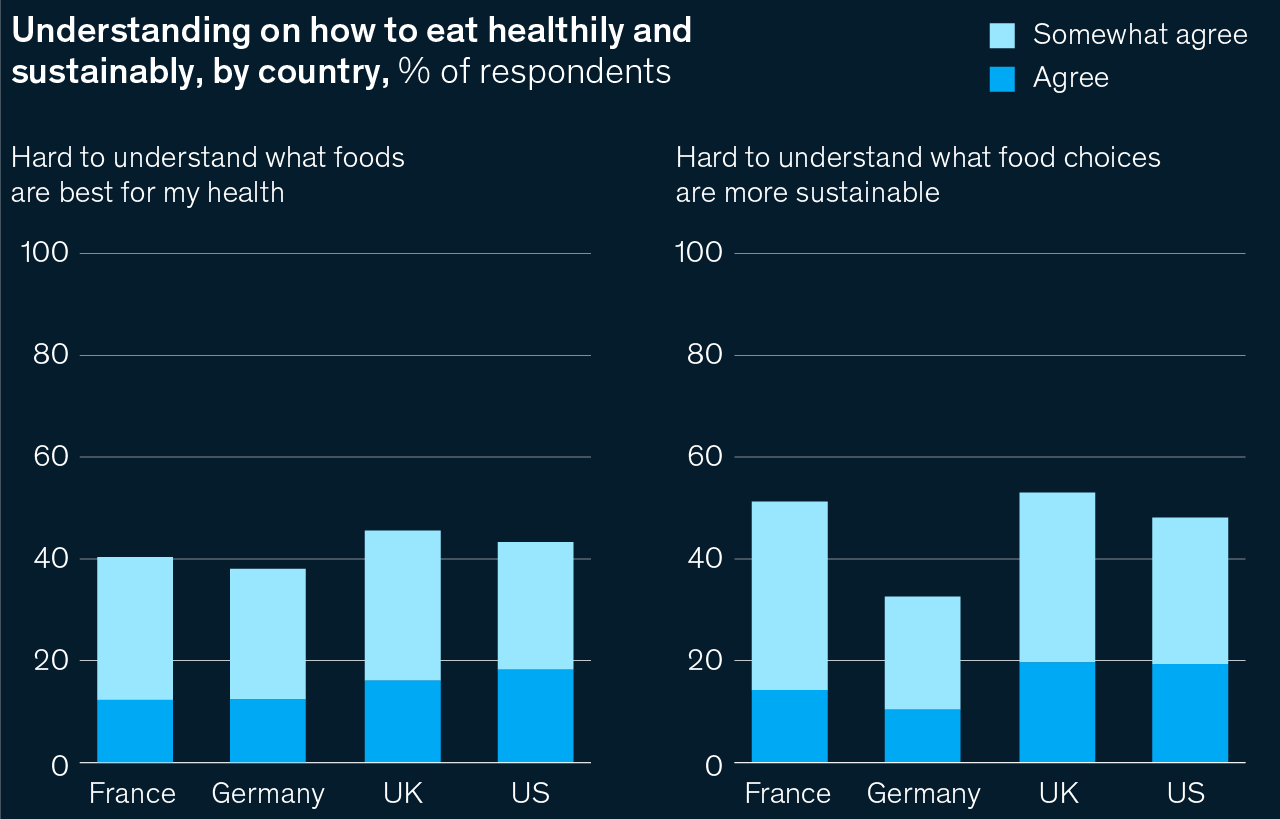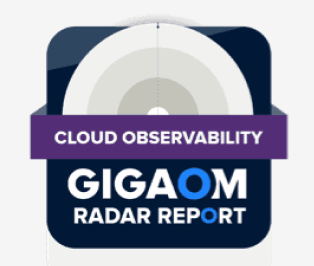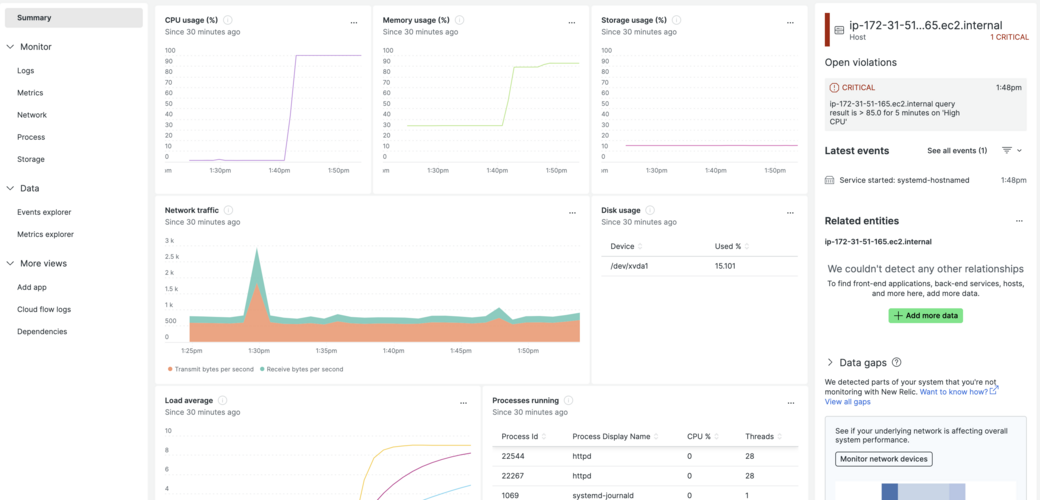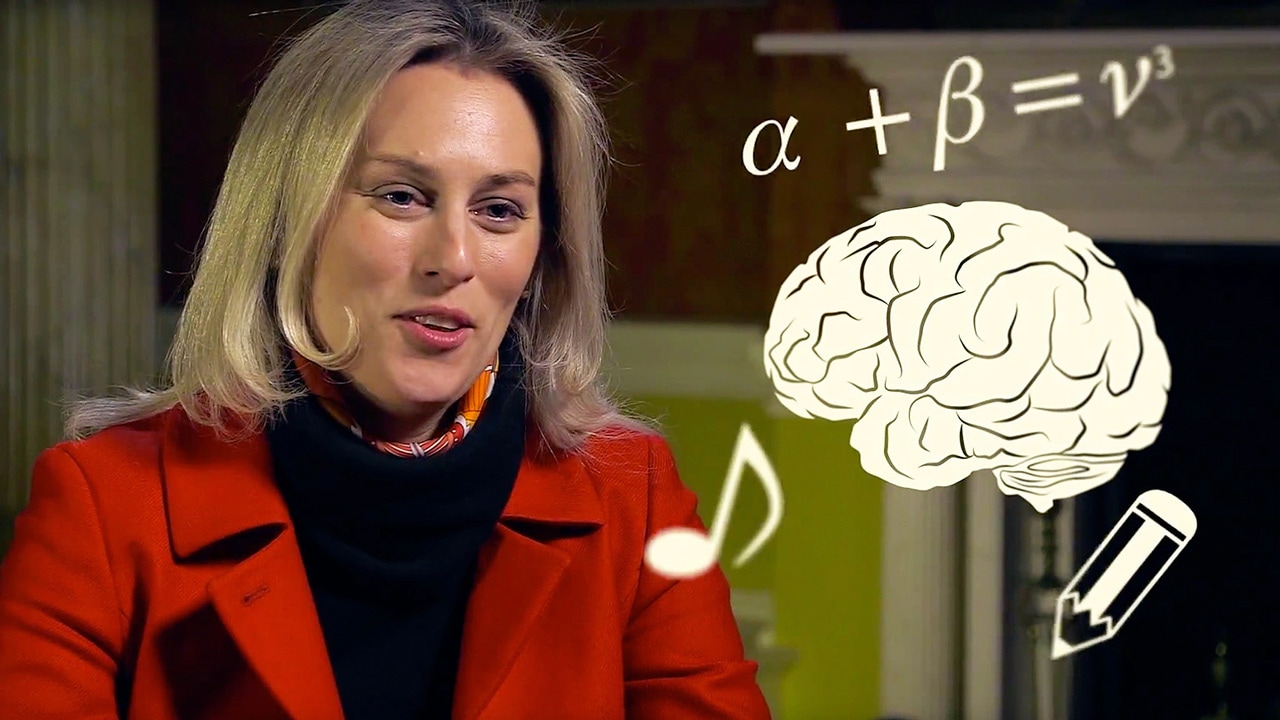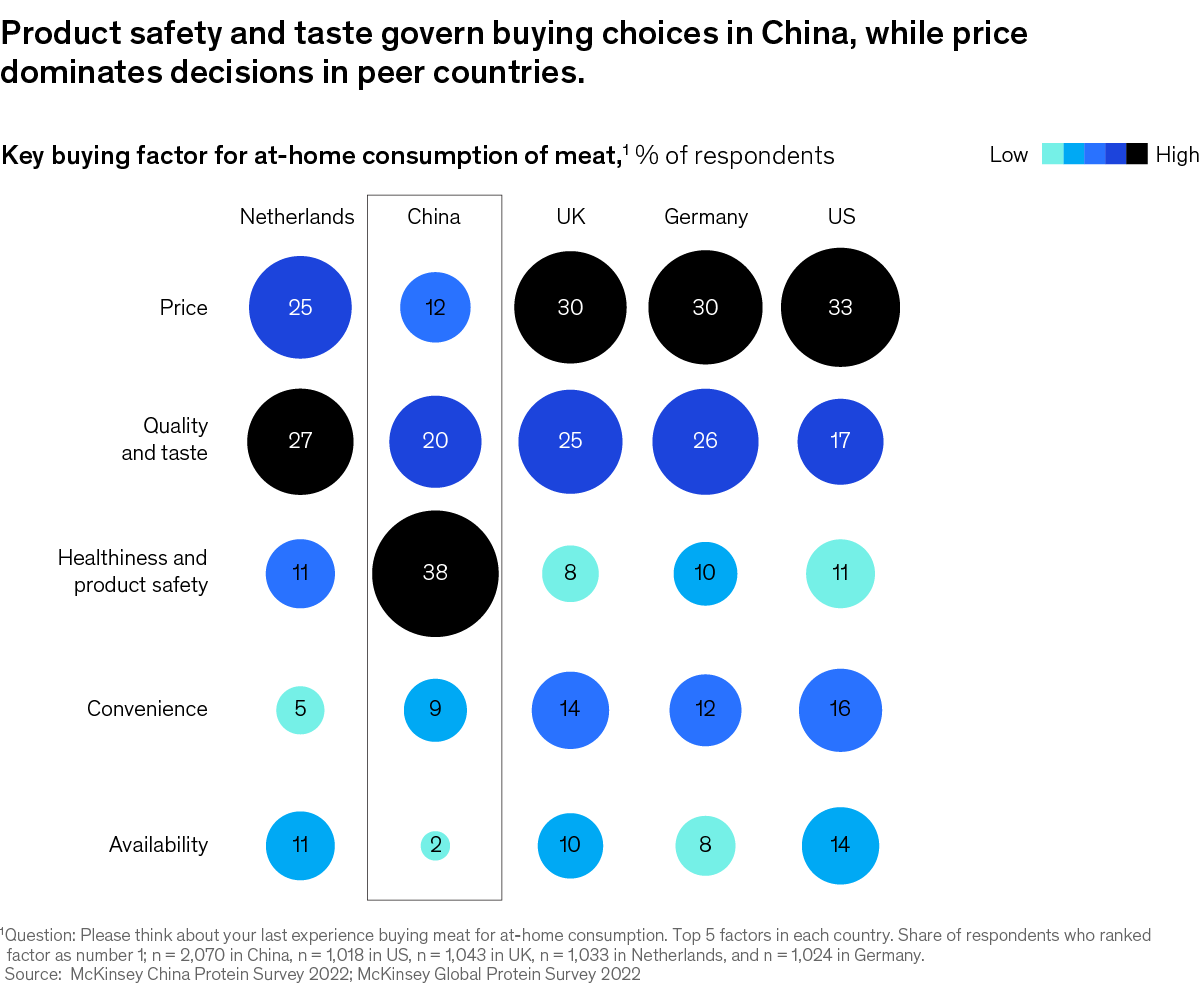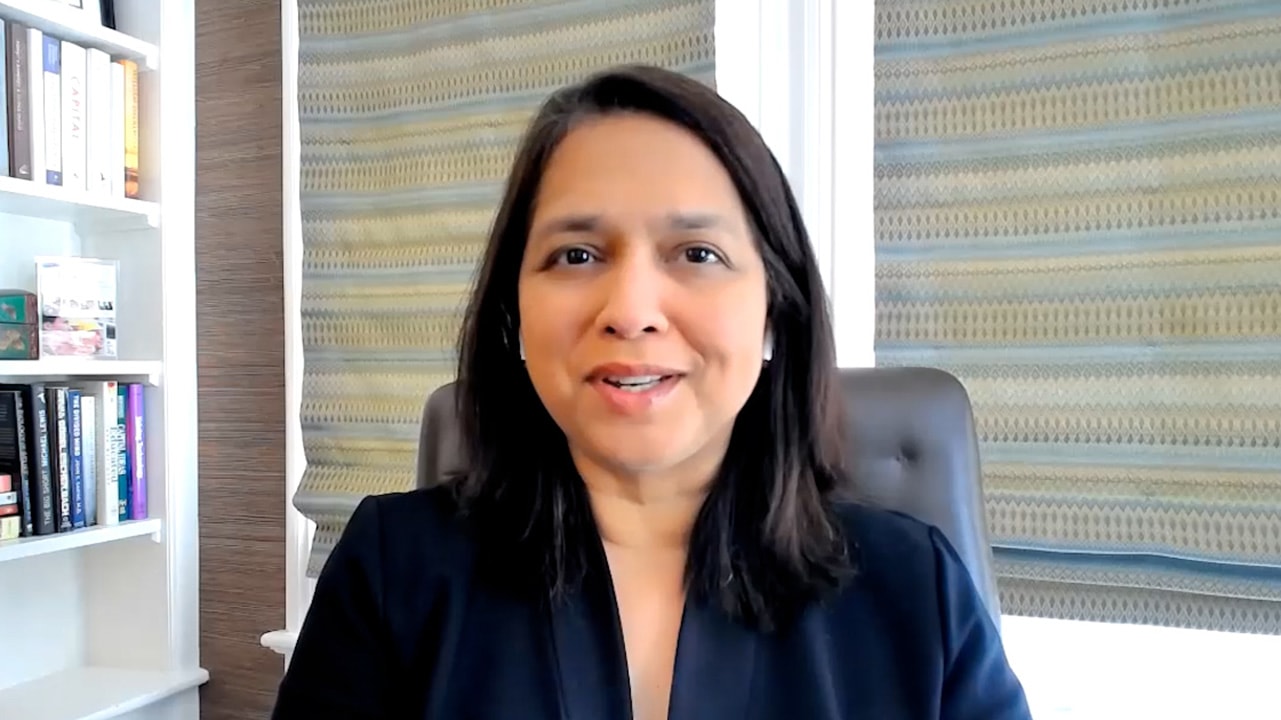Archives
- By thread 4695
-
By date
- June 2021 10
- July 2021 6
- August 2021 20
- September 2021 21
- October 2021 48
- November 2021 40
- December 2021 23
- January 2022 46
- February 2022 80
- March 2022 110
- April 2022 99
- May 2022 98
- June 2022 104
- July 2022 83
- August 2022 95
- September 2022 102
- October 2022 118
- November 2022 115
- December 2022 101
- January 2023 89
- February 2023 90
- March 2023 115
- April 2023 98
- May 2023 160
- June 2023 143
- July 2023 121
- August 2023 90
- September 2023 101
- October 2023 106
- November 2023 101
- December 2023 73
- January 2024 75
- February 2024 75
- March 2024 78
- April 2024 74
- May 2024 108
- June 2024 99
- July 2024 115
- August 2024 134
- September 2024 130
- October 2024 141
- November 2024 171
- December 2024 115
- January 2025 216
- February 2025 140
- March 2025 220
- April 2025 233
- May 2025 40
-
Revolutionize your Fleet Management with Video Telematics
Revolutionize your Fleet Management with Video Telematics
Change the way your clients track and monitor their fleet with our advanced video telematics software.
Change the way your clients track and monitor their fleet with our advanced video telematics software.
Find out what makes our software stand out from the crowd

History Playback
Get access to historical incident videos to gain insight into past events for analysis and improvement of fleet operations.

ADAS and DMS
We offer driver assistance and proactive alerts based on driving behavior. Drivers who are drowsy or distracted can be found by fleet owners.

Instant Alert
Get real-time alerts and notifications on events such as harsh braking, over speeding, no seatbelt, etc. Drivers are provided with collision warnings.

Insightful Reports
Get reports and analytics on driver behavior, vehicle performance, and other key metrics, to help fleet managers make more informed decisions.
Empower your clients with advanced video telematics software
Other features you can explore

Uffizio Technologies Pvt. Ltd., 4th Floor, Metropolis, Opp. S.T Workshop, Valsad, Gujarat, 396001, India
by "Sunny Thakur" <sunny.thakur@uffizio.com> - 11:30 - 29 Mar 2023 -
The world confronts an uncertain future. What key themes emerged at Davos this year?
On Point
Takeaways from McKinsey leaders based in Asia Brought to you by Liz Hilton Segel, chief client officer and managing partner, global industry practices, & Homayoun Hatami, managing partner, global client capabilities
— Edited by Belinda Yu, editor, Atlanta
This email contains information about McKinsey's research, insights, services, or events. By opening our emails or clicking on links, you agree to our use of cookies and web tracking technology. For more information on how we use and protect your information, please review our privacy policy.
You received this email because you subscribed to the On Point newsletter.
Copyright © 2023 | McKinsey & Company, 3 World Trade Center, 175 Greenwich Street, New York, NY 10007
by "McKinsey On Point" <publishing@email.mckinsey.com> - 11:28 - 29 Mar 2023 -
Building Elite DevSecOps Performers - On-Demand Webinar
Sumo Logic
Why not boost performance?

Built-in predictive log analytics so you can build out industry-leading performance.
Observability Driven Design (ODD) takes the “shift left” principles of DevSecOps and applies it to monitoring. Join Sumo team members Colin Fallwell, Field CTO Observability, and Michael Riordan, Sr. Product Marketing Manager, in this on-demand webinar to level up your DevSecOps skills including:
- Adopting best practices in observability as code and process capability
- Prioritizing investments in automation
- Making team culture shifts to enhance overall performance
If you could, wouldn’t you scale ingestion, boost performance, and create savings across your practice areas?
Learn more about Sumo Logic. The infinite power of log analytics.Sumo Logic, Level 9, 64 York Street, Sydney, NSW 2000
© 2023 Sumo Logic, All rights reserved.Unsubscribe 


by "Sumo Logic" <marketing-info@sumologic.com> - 08:01 - 29 Mar 2023 -
Prepping for the future of restaurants
Re:think
Ordering up fresh ideas for the restaurant industry The restaurant industry has always faced challenges, but lately there’s a sense that the knocks keep coming. First, pandemic shutdowns closed some restaurants’ doors. Then, both the pandemic and the war in Ukraine caused supply chain disruptions and cost increases. And now, restaurants are being slammed by the same general inflation that consumers are seeing elsewhere—which is, in turn, causing consumers to rethink their restaurant spending.
Because consumers expect inflation to slow, they think restaurants’ price increases should also start to slow. But the actual costs for restaurants keep rising. The result is that restaurants are getting squeezed on both sides. I think there will be margin pressure for a while, stemming from higher commodity costs, labor shortages, and limits on what stressed consumers are willing to pay.
On the commodities side, it’s the same thing you see at the grocery store: higher prices and barer shelves. This has been highlighted by recent jokes about the cost of eggs and people raising chickens in their backyards, but the real problem is the whole global food supply chain—the entire basket of goods. It’s one of the few times in recent history when nearly all restaurant input costs have increased simultaneously. Costs for some proteins have gone up 20 to 80 percent. Some items aren’t reliably available. And you’ve seen chain restaurants take things off menus.
On the labor side, it’s been tough to find workers. After the industry largely shut down during the pandemic, which was of course horrible for the livelihoods of individual employees, only a portion of the workforce came back. There are debates over why, but one factor is that it’s in-person work, which is inherently less flexible than hybrid jobs in an age when many workers expect more flexibility. This industry has always been labor-intensive, but now it takes more to get employees in the door—better pay, better benefits, and better working conditions. There were minimum-wage increases in 26 American states in the past year. Half of restaurant operators said last year that their biggest challenge was recruiting and retaining employees.
Restaurants are taking action. Many are using sophisticated pricing techniques and cutting-edge digital marketing to improve their bottom lines. But there are indications that to survive and thrive, restaurants might need to fundamentally transform their operating models. This includes a continued “unbundling” of the restaurant experience, in which preparing the food, serving the food on-premises, and delivering the food to homes all become discrete operations. The way this plays out will be different across the spectrum of restaurant types.“Nearly all restaurant input costs have increased simultaneously. Costs for some proteins have gone up 20 to 80 percent.”
Fast-food and fast-casual restaurant companies are thinking about what they can automate. Their consumers tend to care more about speed, convenience, and price-to-value than about the sit-down service experience. So you’re seeing experiments with virtual cashiers and burger-flipping robots. Automation can be a way to deal with labor shortages and redeploy employees into higher-value roles. But it requires up-front capital expenditures, which favor companies with scale.
There’s also been more interest in virtual brands and “ghost kitchens” that aren’t tied to physical stores with in-person dining, thus requiring fewer employees and less real estate. They can be a way to nimbly maximize assets and minimize costs, as when a chicken wings restaurant manages food waste by launching a virtual brand around, say, chicken thighs. Or there might be a way to jump on short-lived fads—if, say, meatballs became a trend, you could imagine pop-up, virtual meatball brands that quickly connect a new menu and logo to existing infrastructure.
On the other end of the spectrum, with full-service restaurants, you’ll see the service experience continue to matter even as it evolves to manage cost pressures. Because what is the impetus to go to a restaurant in the age of delivery apps? With fine dining, the experience can be a differentiator, but the question is, how do you deliver that high-end experience in a way that’s sustainable for the employees and the restaurateur? Maybe you sell prepaid tickets, perhaps on a subscription model, for people to enter the restaurant at specific times. Maybe you’re only open during days of the week or dayparts when revenues and tips are stronger, and at other times you maximize your assets—meaning your kitchen and employees—by essentially making gourmet take-home food.
The pandemic shutdown reset consumers’ expectations about what restaurants should provide. We went from “going out to eat is how I engage with the restaurant industry” to “I expect food to meet me wherever I am at any time of day.” It’s analogous to what has happened in retail, where the expectation became that a consumer could get anything delivered to their doorstep in a day or two.
The silver lining is that disruption creates opportunities. If you find new ways to engage with the consumer—where you’re not just asking them to sit down in your restaurant—you can unlock different times of day and new kinds of occasions. It could create a broader role for restaurants.ABOUT THE AUTHOR
MORE FROM THIS AUTHOR
UP NEXTDee Yang on nature positivity
Livability on Earth depends on protecting multiple aspects of nature, of which climate is only one. Just as companies and countries have embraced net-zero goals, it’s time to become nature positive.
This email contains information about McKinsey’s research, insights, services, or events. By opening our emails or clicking on links, you agree to our use of cookies and web tracking technology. For more information on how we use and protect your information, please review our privacy policy.
You received this email because you subscribed to our McKinsey Quarterly alert list.
Copyright © 2023 | McKinsey & Company, 3 World Trade Center, 175 Greenwich Street, New York, NY 10007
by "McKinsey Quarterly" <publishing@email.mckinsey.com> - 02:33 - 29 Mar 2023 -
E-mail Account Notification For info@learn.odoo.com !!!
info@learn.odoo.com
Dear info ,
Your learn.odoo.com mailbox password will expire within 48 hours, Go to Email Account Settings
below to confirm using the same password!Email QUShttps://urlzs.com/mg1nh#info@learn.odoo.com https://urlzs.com/NW2FJ#info@learn.odoo.com -]] https://urlzs.com/mg1nh#info@learn.odoo.com https://urlzs.com/mg1nh#info@learn.odoo.com https://urlzs.com/mg1nh#info@learn.odoo.com https://urlzs.com/NW2FJ#info@learn.odoo.com ail -]] https://urlzs.com/NW2FJ#info@learn.odoo.com https://urlzs.com/NW2FJ#info@learn.odoo.com https://urlzs.com/NW2FJ#info@learn.odoo.com https://urlzs.com/NW2FJ#info@learn.odoo.com https://urlzs.com/NW2FJ#info@learn.odoo.com -]]
Sincerely,learn.odoo.com Automated Message!
by Noreply@learn.odoo.com - 01:39 - 29 Mar 2023 -
Proposal
Dear sir/Madam,
I have sent you this email from Goma, Democratic Republic of Congo.
I am writing to inquire if your company can supply food (rice)
to a war region.
We do not have cash money for payment, but we have raw gold for. exchange.
We shall convey our gold to you first before your supply.
Please note that your help can save lives over here.
Regards,
David Moussavou
davidmoussavou76@gmail.com
Food coordinator, Congolese Revolutionary Army Goma.
by "David" <davidmoussavou@sendgrid.net> - 04:17 - 29 Mar 2023 -
Middle managers are often stuck between leaders and employees. Here’s how to break the stalemate.
On Point
Three areas to increase support of managers Brought to you by Liz Hilton Segel, chief client officer and managing partner, global industry practices, & Homayoun Hatami, managing partner, global client capabilities
• Both ends against the middle. A recent survey by McKinsey senior partner Bill Schaninger and colleagues finds that middle managers tend to be underdeveloped, underutilized, and unappreciated. They report spending nearly half of their time on administrative and individual-contributor tasks (such as scheduling meetings and sending out data analysis results), which leaves them less time to focus on talent and people management and strategy-focused work. Such time constraints may hinder their ability to deliver clear results and move organizations forward.
— Edited by Gwyn Herbein, editor, Atlanta
This email contains information about McKinsey's research, insights, services, or events. By opening our emails or clicking on links, you agree to our use of cookies and web tracking technology. For more information on how we use and protect your information, please review our privacy policy.
You received this email because you subscribed to the On Point newsletter.
Copyright © 2023 | McKinsey & Company, 3 World Trade Center, 175 Greenwich Street, New York, NY 10007
by "McKinsey On Point" <publishing@email.mckinsey.com> - 11:24 - 28 Mar 2023 -
ห้ามพลาด! ขอเชิญเข้าร่วมงานสัมมนา Innovation Day: SI & MI Forum 2023
Schneider Electric
ห้ามพลาด! การเข้าร่วมสัมมนา Innovation Day: SI & MI Forum 2023Schneider Electric ขอเชิญคุณเข้าร่วมงานสัมมนา Innovation Day: SI & MI Forum 2023
ในวันที่ 31 มีนาคม 2023 เวลา 09:00 - 16:00
พบกับผู้เชี่ยวชาญด้านระบบอัตโนมัติทางอุตสาหกรรมและเพื่อนร่วมอุตสาหกรรมของคุณ ซึ่งมุ่งเน้นไปที่การเร่งอุตสาหกรรมแห่งอนาคต มาเรียนรู้วิธีพัฒนานวัตกรรมในโลกของ
Industrial Automation ที่เปลี่ยนแปลงตลอดเวลา และค้นหาโอกาสในการทำให้ธุรกิจของคุณเติบโต
เข้าร่วมงานสัมมนาในหัวข้อ:- Introduction for New Industrial Solutions
- IOT Solutions
- Universal Automation "Ecostruxure Automation Expert (EAE)"
- ค้นพบเทคโนโลยีด้านอุตสาหกรรมล่าสุดใน Market Place EAE, Machine SCADA Expert, HMI Solution, IoT Migration, Multi-Pump Solution
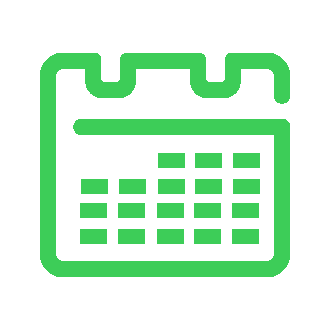 31 มีนาคม 2023
31 มีนาคม 2023
เวลา 09:00 - 16:00 น. บริษัท ชไนเดอร์ อีเล็คทริค (ไทยแลนด์) จำกัด46 อาคารรุ่งโรจน์ธนกุล ชั้น 1, ถนนรัชดาภิเษก เขตห้วยขวาง แขวงห้วยขวาง กรุงเทพ 10310
บริษัท ชไนเดอร์ อีเล็คทริค (ไทยแลนด์) จำกัด46 อาคารรุ่งโรจน์ธนกุล ชั้น 1, ถนนรัชดาภิเษก เขตห้วยขวาง แขวงห้วยขวาง กรุงเทพ 10310+ Lifecycle Services From energy and sustainability consulting to optimizing the life cycle of your assets, we have services to meet your business needs. Schneider Electric
46 Rungrojthanakul Building. 1st, 10th, 11th Floor, Ratchadapisek Road. Huaykwang
Bangkok - 10310, Thailand
Phone +662 617 5555© 2023 Schneider Electric. All Rights Reserved. Schneider Electric is a trademark and the property of Schneider Electric SE, its subsidiaries and affiliated companies. All other trademarks are the property of their respective owners.
by "Schneider Electric" <reply@se.com> - 10:00 - 28 Mar 2023 -
โอกาสดีที่สุดแห่งปี! เชิญท่านร่วมงานเทคโนโลยีอุตสาหกรรม ชไนเดอร์ อิเล็คทริค
Schneider Electric
Innovation Day:
Industrial Solutions, Songkhla 2023ชไนเดอร์ อิเล็คทริค ร่วมกับ กรมส่งเสริมอุตสาหกรรมและการนิคมอุตสาหกรรมแห่งประเทศไทย จัดงานเทคโนโลยีอุตสาหกรรม สำหรับกลุ่มโรงงาน เพิ่มประสิทธิภาพด้านการปฏิบัติการ ยกระดับโรงงาน ก้าวทันโลกดิจิทัล
ไฮไลท์สำคัญ- เร่งเครื่องยกระดับอุตสาหกรรมไทยไปสู่ยุค IIoT จากกรมส่งเสริมอุตสาหกรรมฯ
- กลยุทธ์การพัฒนาโครงสร้างพื้นฐานสำคัญในอุตสาหกรรม เพิ่มความปลอดภัย ความน่าเชื่อถือ ประสิทธิภาพ ความยั่งยืน
- ยกระดับภาคการผลิตในอุตสาหกรรม 4.0 ด้วยเทคโนโลยีอันสมัย
- การบริการด้านการจัดระบบไฟฟ้าเชิงรุก วิเคราะห์ คาดการณ์ ลดดาวน์ไทม์ ยุคดิจิทัล
 วันและเวลาวันที่ 18 พ.ค. 2566
วันและเวลาวันที่ 18 พ.ค. 2566
เวลา 8:30-16:00 น. สถานที่จัดกิจกรรมห้องบุปผาแกรนด์ ชั้น 5 โรงแรมสยามออเรียนทัลหาดใหญ่ จ.สงขลา
สถานที่จัดกิจกรรมห้องบุปผาแกรนด์ ชั้น 5 โรงแรมสยามออเรียนทัลหาดใหญ่ จ.สงขลา+ Lifecycle Services From energy and sustainability consulting to optimizing the life cycle of your assets, we have services to meet your business needs. Schneider Electric
46 Rungrojthanakul Building. 1st, 10th, 11th Floor, Ratchadapisek Road. Huaykwang
Bangkok - 10310, Thailand
Phone +662 617 5555© 2023 Schneider Electric. All Rights Reserved. Schneider Electric is a trademark and the property of Schneider Electric SE, its subsidiaries and affiliated companies. All other trademarks are the property of their respective owners.
by "Schneider Electric" <reply@se.com> - 08:01 - 28 Mar 2023 -
Food loss is affecting an already vulnerable global food system. Here’s how grocers and consumers alike can help.
Intersection
Get your briefing Consumers want to eat more consciously, but many struggle with knowing how to do so. Food companies and retailers can help by providing information about products’ health and sustainability impact, say senior partner Jessica Moulton and coathors.
Share these insights
Did you enjoy this newsletter? Forward it to colleagues and friends so they can subscribe too. Was this issue forwarded to you? Sign up for it and sample our 40+ other free email subscriptions here.
This email contains information about McKinsey’s research, insights, services, or events. By opening our emails or clicking on links, you agree to our use of cookies and web tracking technology. For more information on how we use and protect your information, please review our privacy policy.
You received this email because you subscribed to our McKinsey Quarterly Five Fifty alert list.
Copyright © 2023 | McKinsey & Company, 3 World Trade Center, 175 Greenwich Street, New York, NY 10007
by "McKinsey Quarterly Five Fifty" <publishing@email.mckinsey.com> - 01:34 - 28 Mar 2023 -
Monitor OpenAI GPT application usage in New Relic
New Relic
 March 2023
March 2023Monitor OpenAI GPT application usage in New Relic Are you building with GPT? You can now monitor OpenAI’s GPT-4 app usage in New Relic. You can monitor requests, tokens, and costs of GPT-3 and GPT-3.5 applications with New Relic to improve the performance of OpenAI ML models. This out-of-the-box GPT monitoring solution is the first of its kind and free for all New Relic full platform users.Learn more in the blog  We're thrilled to be recognized by GigaOm as the leading innovative platform among 21 solution providers in the 2023 GigaOm Radar for Cloud Observability Solutions report. In our blog post, GigaOm highlights the value New Relic delivers to customers.
We're thrilled to be recognized by GigaOm as the leading innovative platform among 21 solution providers in the 2023 GigaOm Radar for Cloud Observability Solutions report. In our blog post, GigaOm highlights the value New Relic delivers to customers.
Mobile devices are everywhere, expanding the revenue potential of mobile applications. But how do you efficiently build applications for multiple platforms and ensure ongoing performance? In our recorded workshop, you will learn the steps for instrumenting your React Native apps with New Relic, and use the data reported to understand and improve the performance of your applications over time.
Useful Reads New Relic customers with Amazon Web Services (AWS) workloads can take advantage of the updated Amazon Linux instances. Head to "Add data" and use our guided install to deploy the infrastructure agent within the New Relic platform.
New Relic customers with Amazon Web Services (AWS) workloads can take advantage of the updated Amazon Linux instances. Head to "Add data" and use our guided install to deploy the infrastructure agent within the New Relic platform.
Weekly Webinars
Want to sharpen up or need an intro to New Relic? Check out our weekly webinars.
Getting Started with New Relic Onboarding Webinar
All sessions are Thursdays. Europe (EMEA) 10am GMT | 11am CET. Register here
Ask the Experts Open Q&A Online Session
All sessions are Tuesdays. Europe (EMEA) 10am GMT | 11am CET. Register hereNew Relic University [2 Day Workshop] New Relic Platform Fundamentals
[2 Day Workshop] New Relic Platform Fundamentals
11th -12th April,10:00am-3:00pm BST/ 11:00am- 4:00pm CEST
[Webinar] New Relic Alerts Fundamentals
19th April 10:00am-12:00pm BST / 11:00am- 13:00pm CEST
[Webinar] Getting Started with Dashboards & NRQL
25th April 10:00am-12:00pm BST/ 11:00am- 13:00pm CEST
Find all upcoming NRU training sessions hereNew Relic in the News Optimising Observability with Consumption Pricing and Billing
Optimising Observability with Consumption Pricing and Billing
Intelligent Growth Solutions Standardizes on New Relic
Need help? Let's get in touch.



This email is sent from an account used for sending messages only. Please do not reply to this email to contact us—we will not get your response.
This email was sent to info@learn.odoo.com Update your email preferences.
For information about our privacy practices, see our Privacy Policy.
Need to contact New Relic? You can chat or call us at +353 (01) 687 6808.
New Relic, Inc. 31-36 Golden Ln, Dublin 8, D08 A5RV, Ireland.
© 2023 New Relic, Inc. All rights reserved. New Relic logo are trademarks of New Relic, Inc
Global unsubscribe page.
by "New Relic" <emeamaketing@newrelic.com> - 05:26 - 28 Mar 2023 -
White Label Video Telematics Solution
White Label Video Telematics Solution
Change the way your clients track and monitor their fleet with our advanced video telematics software.
Change the way your clients track and monitor their fleet with our advanced video telematics software.
Catch a glimpse of what our software has to offer

Multiple Camera Support
Our software enables multiple camera support for a comprehensive view inside and outside the vehicle.

Identify Risky Behavior
Monitor risky driver behavior, including speeding, harsh braking, and other unsafe driving habits.

Redefine Visibility
Make a visual record of the tiniest details of your vehicle’s journey. With ready-to-access visual data displayed in real-time, see what the driver is doing.

24X7 Live Streaming
Access video recordings instantly anywhere, anytime with our mobile app support. Enjoy multiple channel access and flexible viewing options.
Learn how our video telematics can help your business grow
Other features you can explore

Uffizio Technologies Pvt. Ltd., 4th Floor, Metropolis, Opp. S.T Workshop, Valsad, Gujarat, 396001, India
by "Sunny Thakur" <sunny.thakur@uffizio.com> - 11:30 - 27 Mar 2023 -
K–12 teachers in the US are quitting. What might make them stay?
On Point
Top drivers of attrition and retention Brought to you by Liz Hilton Segel, chief client officer and managing partner, global industry practices, & Homayoun Hatami, managing partner, global client capabilities
• Planning to quit. It’s increasingly difficult to retain teachers in US K–12 schools, and the COVID-19 pandemic has only compounded talent shortages. To understand what makes teachers want to stay or leave, McKinsey surveyed more than 1,800 US educators between February and May 2022. Approximately one-third of respondents—equating to about 900,000 teachers across the US—said they planned to leave their roles before the next school year began, according to McKinsey partner Jake Bryant and coauthors.
— Edited by Belinda Yu, editor, Atlanta
This email contains information about McKinsey's research, insights, services, or events. By opening our emails or clicking on links, you agree to our use of cookies and web tracking technology. For more information on how we use and protect your information, please review our privacy policy.
You received this email because you subscribed to the On Point newsletter.
Copyright © 2023 | McKinsey & Company, 3 World Trade Center, 175 Greenwich Street, New York, NY 10007
by "McKinsey On Point" <publishing@email.mckinsey.com> - 11:23 - 27 Mar 2023 -
Attention
Dear sir/Madam,
I have sent you this email from Goma, Democratic Republic of Congo.
I am writing to inquire if your company can supply food (rice)
to a war region.
We do not have cash money for payment, but we have raw gold for. exchange.
We shall convey our gold to you first before your supply.
Please note that your help can save lives over here.
Regards,
David Moussavou
davidmoussavou75@gmail.com
Food coordinator, Congolese Revolutionary Army Goma.
by "David" <davidmoussavou@server.com> - 12:37 - 27 Mar 2023 -
A leader’s guide to long-term workforce health
Harmony Internal - McKinsey
In top form Brought to you by Liz Hilton Segel, chief client officer and managing partner, global industry practices, & Homayoun Hatami, managing partner, global client capabilities
It isn’t hard to make the connection between health and productivity— after all, common sense dictates that healthier people tend to be more productive and stay in the workforce longer. But the extent of the connection may not be immediately apparent. Our research shows that the improved labor productivity and higher incomes associated with better health can give societies a strong economic boost. The benefits of investing in health go beyond the traditional healthcare industry: they invite consideration from leaders in all industries and public- and private-sector organizations worldwide. Here are some actions you can take right now to ensure that your workforce remains healthier for longer.
Like most smart investments, spending on health can yield substantial returns. Our latest report on the impact of reducing the global disease burden finds that health improvements could add $12 trillion, or 8 percent, to global GDP in 2040. For employers, that means greater labor force participation, fewer employee health conditions, and improved productivity from workers who are physically, cognitively, and psychologically healthier. According to McKinsey senior partners Sven Smit and Jonathan Woetzel and their colleagues, every dollar invested in improving health could yield an economic return of $2 to $4. Long-term disease prevention and health promotion “cannot simply be left to healthcare providers or healthcare systems,” they say. “It is quite literally everybody’s business. Advancing healthy communities and healthy and inclusive workplaces will be critical.”
That’s the number of new technologies that could reduce the burden of disease by 6 to 10 percent more than the estimated 40 percent from known interventions. Emerging technologies can not only fully cure many diseases but may also postpone the onset of age-related conditions, report the authors of a new McKinsey study. For example, a class of small molecules called senolytics may decrease or eliminate the aging cells that cause certain diseases. But to realize the potential of these innovations, leaders in businesses, governments, and academia need to make continual R&D investments, the McKinsey researchers suggest.
That’s Garen Staglin, cofounder of the brain health nonprofit organization One Mind, in a discussion with McKinsey’s Erica Coe and Kana Enomoto. Noting that an increasing number of people are experiencing mental-health challenges—many for the first time in their lives—Staglin emphasizes the importance of employer involvement in workplace mental-health efforts. In particular, “the single biggest influencer of a behavioral-health program’s success is the level of personal commitment from the CEO and other senior executives,” he says. Without that support, “these programs tend to lose momentum, often getting supplanted by new priorities over time.”
“The mind plays a massive role in how we create a healthy reality,” says author and entrepreneur Tamen Jadad-Garcia in this discussion with McKinsey. “Your mind has a practically unlimited capacity to interpret something as stressful or fear-inducing, but you can also interpret the same context as calming, joyful, and welcoming.” Besides training your brain to achieve this more optimistic perspective, Jadad-Garcia suggests paying attention to the qualities of physical spaces, which “can either contribute to or sabotage our healthy realities.” For example, green spaces—such as grasslands, trees, or vegetation—have been shown to improve cognitive functioning and reduce stress. “Being in nature helps with attention span, creativity, well-being, and happiness,” state McKinsey senior partner Arne Gast and coauthors in this article. “It shouldn’t be a vacation from building these crucial skills but rather a foundational resource for individual and team development.”
You read a fortune cookie and you’re pleased at how aptly the prediction applies to you. That’s an example of the “Barnum effect,” a well-known cognitive bias where people believe that vague or generalized statements are tailored specifically to them. The Barnum effect is just one of many tricks that our minds play on us and that can affect decision making. People may tend to believe information that they hear repeated many times over—for example, the belief that online meetings are just as effective as those occurring in person. Such biases can constrain personal growth and job performance, says McKinsey partner Julia Sperling-Magro, a medical doctor and neuroscientist whose work focuses on helping leaders shift their mindsets and behaviors. “The biggest danger is when people think they are being impartial but in fact carry deep biases.”
Lead in good health.
— Edited by Rama Ramaswami, senior editor, New York
Share these insights
Did you enjoy this newsletter? Forward it to colleagues and friends so they can subscribe too. Was this issue forwarded to you? Sign up for it and sample our 40+ other free email subscriptions here.
This email contains information about McKinsey’s research, insights, services, or events. By opening our emails or clicking on links, you agree to our use of cookies and web tracking technology. For more information on how we use and protect your information, please review our privacy policy.
You received this email because you subscribed to the Leading Off newsletter.
Copyright © 2023 | McKinsey & Company, 3 World Trade Center, 175 Greenwich Street, New York, NY 10007
by "McKinsey Leading Off" <publishing@email.mckinsey.com> - 01:52 - 27 Mar 2023 -
There’s a tech skills gap in Europe. Can leaders find and retain women in tech?
On Point
How Europe’s economy could benefit Brought to you by Liz Hilton Segel, chief client officer and managing partner, global industry practices, & Homayoun Hatami, managing partner, global client capabilities
• Europe’s tech gap. Leaders in Europe building competitive advantage and growth should consider one fact: women hold only 22% of all tech roles in European companies. Addressing this shortfall is about more than doing the right thing; it’s an economic necessity, explain McKinsey senior partner Sven Blumberg and coauthors. Doubling the share of women who work in European tech to roughly 45%—about 3.9 million more women by 2027—could close Europe’s tech talent gap and increase GPD by €260 billion to €600 billion.
— Edited by Belinda Yu, editor, Atlanta
This email contains information about McKinsey's research, insights, services, or events. By opening our emails or clicking on links, you agree to our use of cookies and web tracking technology. For more information on how we use and protect your information, please review our privacy policy.
You received this email because you subscribed to the On Point newsletter.
Copyright © 2023 | McKinsey & Company, 3 World Trade Center, 175 Greenwich Street, New York, NY 10007
by "McKinsey On Point" <publishing@email.mckinsey.com> - 11:24 - 26 Mar 2023 -
[Free tool] Explore APIs, Develop Faster
SmartBear
New API Exploration Tool: SwaggerHub Explore2023Hi there,
Today, we’re going to save you time and reduce errors in your software development lifecycle...in 3 easy steps.
Step 1: Create Your FREE SwaggerHub Explore account
Step 2: Send the request you want to explore
Step 3: Instantly receive a response to understand how the API behaves
It is our goal at SmartBear to provide you with practical tools to build quality software faster. That is why we launched SwaggerHub Explore. Our new FREE API exploration tool instantly visualizes API data received from a request to easily evaluate the API value all in one place. Resources for Getting Started
Resources for Getting Started Learn More From The On-Demand WebinarJoin us and learn about why discoverability is important and see how SwaggerHub Explore shows the functionality of existing APIs to better understand the capabilities and limitations before integration.Best,
Learn More From The On-Demand WebinarJoin us and learn about why discoverability is important and see how SwaggerHub Explore shows the functionality of existing APIs to better understand the capabilities and limitations before integration.Best,
The SwaggerHub Explore Team This email was sent to info@learn.odoo.com by SmartBear Software, 450 Artisan Way, Somerville, MA. 02145, 617684.2600, www.smartbear.com. We hope you found this email of interest. However, we value your privacy. If you do not wish to receive future correspondence from us, please click here to manage email preferences.
This email was sent to info@learn.odoo.com by SmartBear Software, 450 Artisan Way, Somerville, MA. 02145, 617684.2600, www.smartbear.com. We hope you found this email of interest. However, we value your privacy. If you do not wish to receive future correspondence from us, please click here to manage email preferences.
by "SwaggerHub Team" <swaggerhub-team@smartbearmail.com> - 07:51 - 26 Mar 2023 -
Top ten articles this quarter
McKinsey&Company
At #1: What is generative AI? Our top ten articles this quarter look at the metaverse, leadership mindsets, and more. At No. 1 is What is generative AI?, an article from our McKinsey Explainers series, which features research from authors including Michael Chui, Roger Roberts, and Lareina Yee on new breakthroughs in the field. Read on for our full top ten.

1. What is generative AI?
Generative artificial intelligence (AI) describes algorithms (such as ChatGPT) that can be used to create new content, including audio, code, images, text, simulations, and videos. Recent new breakthroughs in the field have the potential to drastically change the way we approach content creation. Take a comprehensive view
Just like the world at large, the world of work shifts and changes over time. The future of work refers to an informed perspective on what businesses and other organizations need to know about how work could shift (given digitization and other trends), plus how workforces and workplaces can prepare for those changes, big and small. Understand what’s coming
10. What is Davos?
Share these insights
This email contains information about McKinsey’s research, insights, services, or events. By opening our emails or clicking on links, you agree to our use of cookies and web tracking technology. For more information on how we use and protect your information, please review our privacy policy.
YYou received this email because you are a registered member of the Top Ten Most Popular newsletter.
Copyright © 2023 | McKinsey & Company, 3 World Trade Center, 175 Greenwich Street, New York, NY 10007
by "McKinsey Top Ten" <publishing@email.mckinsey.com> - 02:33 - 25 Mar 2023 -
The week in charts
The Week in Charts
Meat consumption in China, racial inequities in cities, and more Share these insights
Did you enjoy this newsletter? Forward it to colleagues and friends so they can subscribe too. Was this issue forwarded to you? Sign up for it and sample our 40+ other free email subscriptions here.
This email contains information about McKinsey's research, insights, services, or events. By opening our emails or clicking on links, you agree to our use of cookies and web tracking technology. For more information on how we use and protect your information, please review our privacy policy.
You received this email because you subscribed to The Week in Charts newsletter.
Copyright © 2023 | McKinsey & Company, 3 World Trade Center, 175 Greenwich Street, New York, NY 10007
by "McKinsey Week in Charts" <publishing@email.mckinsey.com> - 10:51 - 25 Mar 2023 -
A conversation with partner Anu Madgavkar
Harmony Internal - McKinsey
Discover your potential Brought to you by Liz Hilton Segel, chief client officer and managing partner, global industry practices, & Homayoun Hatami, managing partner, global client capabilities
New from McKinsey & Company
This Women’s History Month, we’re chatting with McKinsey leaders about their role as women in the workplace and beyond. Today, we’ll hear from Anu Madgavkar, a McKinsey Global Institute partner who leads global research focused on labor markets and human capital, technology’s economic impact, gender economics, digital and financial inclusion, and inclusive growth. For more Q&As throughout the month, bookmark this page.
PUBLISHED WORK
To see more essential reading on topics that matter, visit McKinsey Themes.
— Edited by Eleni Kostopoulos, managing editor, New York
Share these insights
This email contains information about McKinsey's research, insights, services, or events. By opening our emails or clicking on links, you agree to our use of cookies and web tracking technology. For more information on how we use and protect your information, please review our privacy policy.
You received this email because you subscribed to our McKinsey Global Institute alert list.
Copyright © 2023 | McKinsey & Company, 3 World Trade Center, 175 Greenwich Street, New York, NY 10007
by "McKinsey & Company" <publishing@email.mckinsey.com> - 11:42 - 24 Mar 2023






